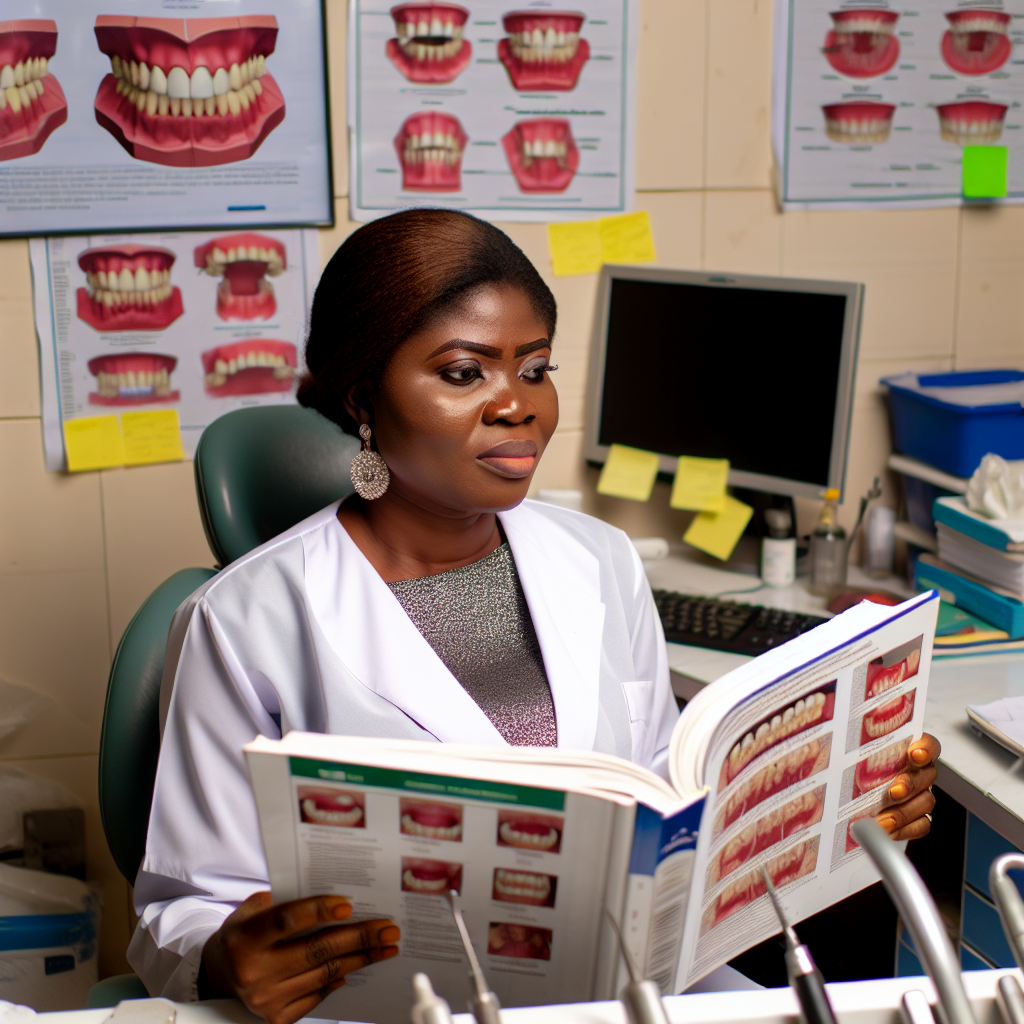Introduction
Restorative dental terminology involves the vocabulary used to describe procedures and treatments in dentistry.
Understanding dental terminology is crucial for patients to communicate effectively with their dentists.
- Restorative dental terminology involves the vocabulary used to describe procedures and treatments in dentistry.
- Understanding dental terminology is crucial for patients to communicate effectively with their dentists.
Basic Dental Terms
In restorative dentistry, there are several common terms that are used to describe different procedures and treatments.
Understanding these terms is essential to ensure clear communication between patients and dental professionals.
Filling
A filling is a dental restoration used to repair minor to moderate tooth damage, such as cavities.
It involves removing the decayed part of the tooth and filling the space with a material like amalgam or composite resin.
Crown
A crown, also known as a dental cap, is a prosthetic cover that is placed over a damaged or decayed tooth.
It helps to restore the tooth’s shape, size, and strength while improving its appearance.
Bridge
A dental bridge is used to replace one or more missing teeth by anchoring artificial teeth to the adjacent natural teeth or dental implants.
It helps to restore the function and aesthetics of the smile.
How These Terms are Related to Dental Procedures
These terms are essential in restorative dentistry as they describe the different treatments and procedures that can be performed to restore oral health and function.
For example, a filling is used to repair a small cavity, while a crown is used to protect a weak tooth or restore a tooth after a root canal treatment.
A bridge, on the other hand, is used to fill in gaps created by missing teeth and prevent further oral health issues.
Understanding these basic dental terms can help patients communicate effectively with their dentist and have a better understanding of their treatment options.
It is important for individuals to be informed about these terms to make informed decisions about their oral health and well-being.
When it comes to restorative dentistry, the materials used play a crucial role in the success of the treatment.
Here is an in-depth look at the different materials used in restorative dentistry, along with their benefits and drawbacks.
Amalgam
Amalgam is a traditional restorative material that has been used in dentistry for over a century.
It is made up of a combination of metals, including silver, mercury, tin, and copper.
- Benefits
- Durable and long-lasting
- Cost-effective
- Easy to work with
- Drawbacks
- Not tooth-colored, which may affect aesthetics
- Potential health concerns related to mercury
- May require more tooth structure removal
Composite Resin
Composite resin is a tooth-colored material that is commonly used for fillings, bonding, and cosmetic restorations.
It is a mixture of plastic and glass particles.
- Benefits
- Natural-looking and aesthetic
- Bonds well to tooth structure
- Requires less tooth structure removal
- Drawbacks
- Less durable than amalgam
- May discolor over time
- May be more expensive than amalgam
Porcelain
Porcelain is a ceramic material that is used for dental crowns, veneers, and inlays/onlays.
It is known for its strength, durability, and lifelike appearance.
- Benefits
- Natural-looking and translucent
- Highly durable and resistant to wear
- Biocompatible and well-tolerated by the gums
- Drawbacks
- More expensive than other materials
- Requires multiple visits for fabrication
- May cause wear on opposing teeth if not properly aligned
The choice of restorative material depends on various factors.
These include the location of the restoration, the patient’s oral health, aesthetic preferences, and budget constraints.
It is essential for dentists to educate their patients about the pros and cons of each material.
See Related Content: Nutritional Guidelines for Nigerian Children
Types of Restorative Procedures
Restorative dentistry encompasses a variety of procedures aimed at repairing and restoring the function and aesthetics of your smile.
Here, we will discuss some common restorative procedures and how they can improve your overall oral health and appearance.
Fillings
Fillings are one of the most common restorative procedures performed by dentists.
They are used to repair cavities caused by decay and restore the shape and function of the tooth.
Fillings can be made of various materials, such as amalgam, composite resin, gold, or porcelain.
By filling in the cavity, the dentist can prevent further decay and damage to the tooth.
This helps to maintain the structural integrity of the tooth and prevent the need for more extensive treatments in the future.
Additionally, fillings improve aesthetics by blending in with the natural color of your teeth.
Veneers
Veneers are thin shells made of porcelain or composite resin that are bonded to the front surface of the teeth.
They are used to improve the appearance of teeth that are discolored, misaligned, chipped, or worn down.
Veneers can also close gaps between teeth and create a more uniform smile.
By covering the imperfections in the teeth, veneers can enhance the overall aesthetics of your smile.
They are custom-made to match the color and shape of your natural teeth, creating a seamless and natural-looking result.
Transform Your Career with Expert Guidance
Get personalized mentorship consulting that’s tailored to your unique path. Our expert advice is actionable and exclusive.
Get StartedVeneers are also durable and stain-resistant, providing long-lasting results.
Dental Implants
Dental implants are a permanent solution for replacing missing teeth.
They consist of a titanium post that is surgically implanted into the jawbone, which serves as a sturdy foundation for the replacement tooth or teeth.
Dental implants can restore your ability to eat, speak, and smile with confidence.
In addition to filling gaps in your smile, dental implants help to maintain the structure of the jawbone and prevent bone loss.
This can preserve the shape of your face and prevent facial sagging that can occur with missing teeth.
Dental implants also look and function like natural teeth, providing a comfortable and long-lasting solution.
Crowns
Crowns, also known as caps, are used to cover and protect damaged or weakened teeth.
They are custom-made to fit over the entire tooth, restoring its shape, size, and strength.
Crowns can be made of materials such as porcelain, metal, or a combination of both.
By encasing the tooth, crowns can prevent further damage and decay while restoring its function.
Crowns also improve the appearance of the tooth by enhancing its color, shape, and alignment.
They are a durable and long-lasting solution that can withstand the forces of chewing and biting.
Restorative dental procedures offer a range of options for repairing and enhancing your smile.
Whether you need to fill a cavity, cover imperfections, replace missing teeth, or protect a weakened tooth, restorative dentistry can help you achieve a healthy and beautiful smile.
Uncover the Details: The Role of Veterinary Medicine in Nigerian Agriculture
Understanding Dental Appliances
Dental appliances play a critical role in restorative dentistry.
They help patients achieve optimal oral health.
From dentures to retainers to night guards, each appliance serves a specific purpose.
These devices restore dental function and aesthetics.
Explanation of Different Dental Appliances
Dentures:
Dentures are removable appliances that replace missing teeth and surrounding tissues.
They come in two types: partial and complete dentures.
Partial dentures are aimed at cases where some natural teeth remain.
Complete dentures are utilized when all teeth are missing.
Retainers:
Retainers are custom-made appliances designed to maintain the position of teeth after orthodontic treatment.
They prevent teeth from shifting back to their original positions.
There are different types of retainers, including Hawley retainers, Essix retainers, and fixed retainers.
Night Guards:
Night guards, also known as occlusal guards or occlusal splints, are worn during sleep.
They protect teeth from grinding or clenching.
Night guards help prevent wear and damage to teeth.
Importance of Proper Care and Maintenance for Dental Appliances
Proper care and maintenance of dental appliances are essential to ensure their longevity and effectiveness.
Here are some important tips for taking care of dental appliances:
- Cleanliness: Regularly clean dental appliances to prevent the buildup of bacteria and plaque.
- Storage: Store dental appliances in a designated case when not in use to protect them from damage.
- Regular Check-ups: Visit your dentist regularly to have your dental appliances examined for fit and functionality.
- Avoiding Damage: Avoid exposing dental appliances to excessive heat, harsh chemicals, or physical trauma.
- Replacement: Replace dental appliances as recommended by your dentist to ensure proper function and hygiene.
Understanding different dental appliances and the importance of caring for them properly is crucial.
This understanding helps in maintaining oral health and overall well-being.
By following these guidelines, patients can enjoy the benefits of their restorative dental treatments for years to come.
Learn More: Innovations in Ophthalmology: Nigerian Contributions

Discussing Treatment Plans
When it comes to discussing treatment plans with your dentist, it is crucial to have a clear understanding of restorative dental terminology.
Importance of Understanding Restorative Dental Terminology
- Knowing the terminology helps you grasp the details of your treatment plan better.
- Understanding the terminology enables you to ask informed questions about your treatment options.
- It empowers you to make educated decisions about your oral health care.
- Being knowledgeable about the terminology can lead to a more collaborative relationship with your dentist.
- It ensures effective communication between you and your dental care provider.
How Patients Can Ask Questions and Seek Clarification
- Take the time to research common restorative dental terms before your appointment.
- During your consultation, don’t hesitate to ask your dentist to explain any terms or procedures you are unfamiliar with.
- Ask for visual aids or diagrams to enhance your understanding of the treatment plan.
- Request a written summary of your treatment plan with a glossary of terms for reference.
- Seek clarification on the expected outcomes, risks, and alternatives for each recommended treatment option.
By actively engaging in discussions about your treatment plan and clarifying any uncertainties regarding restorative dental terminology, you can ensure that you are fully informed and confident in the decisions you make about your oral health care.
Find Out More: Financial Aspects of Anaesthesiology in Nigeria
Understanding Restorative Dental Terminology
Understanding restorative dental terminology is crucial for patients to make informed decisions about their oral health.
It allows them to comprehend the procedures recommended by their dentist.
Patients should not hesitate to ask questions and seek clarification when needed.
This will help in establishing a strong patient-dentist relationship based on trust and mutual understanding.
By being proactive in their understanding of restorative dental terminology, patients can actively participate in their treatment plan.
This knowledge empowers them to take charge of their oral health and well-being.
A comprehensive grasp of restorative dental terminology is essential for patients to navigate the world of dental procedures effectively.
This understanding enables them to communicate effectively with their dentist.
Patients are encouraged to be proactive in asking questions and seeking clarification to ensure they receive the best possible care.
Additional Resources
A look at the two–way referral system: experience and perception of …
Amalgam phase down: baseline data preceding implementation in …




